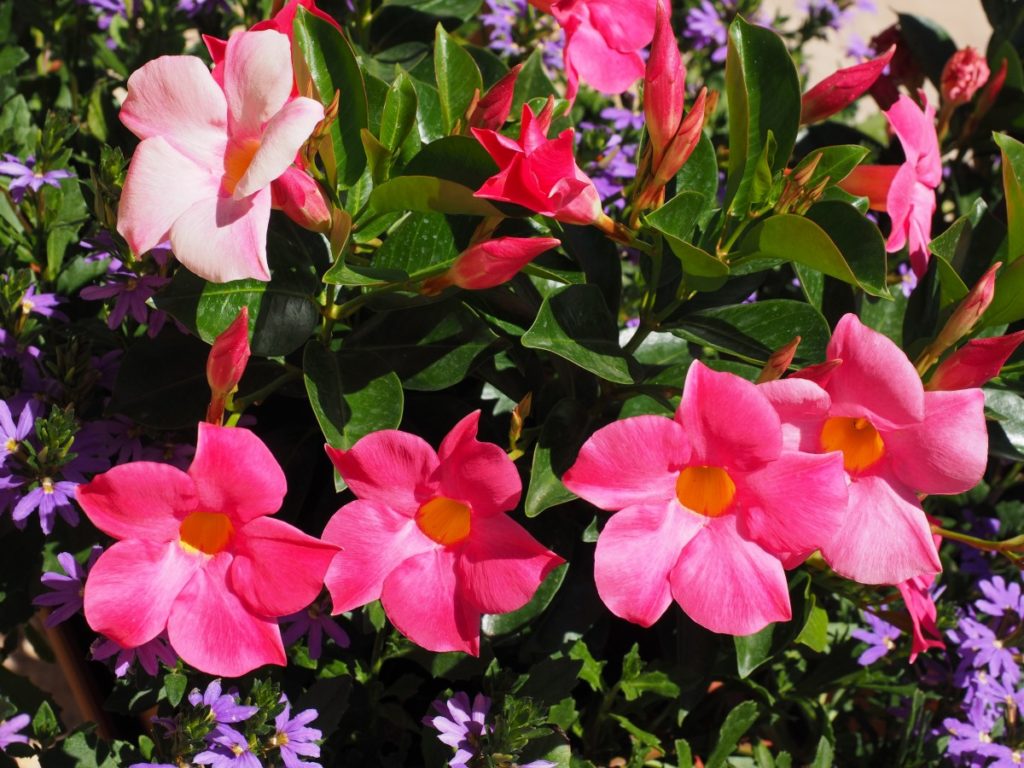
Dipladenias are delightful shrubs that have beautiful trumpet-shaped flowers in white, pink, crimson, and yellow. They are closely related to the mandevilla and are easily confused with their first cousin. Dipladenias, however, have slightly smaller flowers and narrower leaves.
Plant dipladenias in a bright, sunny location that gets about 6-8 hours a day of light. Protect the plant if extreme temperatures and drought occur during the hot summer months. During these times, make sure it gets extra water since the plant might wilt under the punishing sun.
Plant in fertile soil with plenty of compost and organic matter. Dipladenias love well-drained soil and hate having wet feet. Plant these shrubs in the landscape in zones 10 and above. If planted in the warmer parts of zone 9, they will defoliate during the colder months but will come back in the spring if the plant is healthy. Protect this plant from freezing temperatures and frost. In zones, 9A or lower, these plants can be used as annuals or as delightful container plants. Dipladenias will respond well to an early feeding in the spring and periodically through the growing season. Use a fertilizer for blooming plants, either liquid or time-release will work just fine. Always make sure to follow the fertilizer product label for frequency and strength.
Note: These plants are grown for decorative purposes and are not intended for human or animal consumption
FAST FACTS
Outstanding Features: Adds continuous color to the tropical landscape, attractive foliage

Common Name
Dipladenia, Rocktrumpet

Bloom Colors
Yellow, pink, red and white

Water
Water every day until established then as needed.

Zone
9b and above

Fertilizer
Feed during the growing season with a fertilizer for blooming plants

Scientific Name
Dipladenia spp.

Light
Full sun

Size
3 feet tall and about as wide

Overwintering
Plant in containers. Bring inside to a sunny location when temperatures drop below 50 degrees.

Companion Plants
Fox tail fern, ipomea, ixora